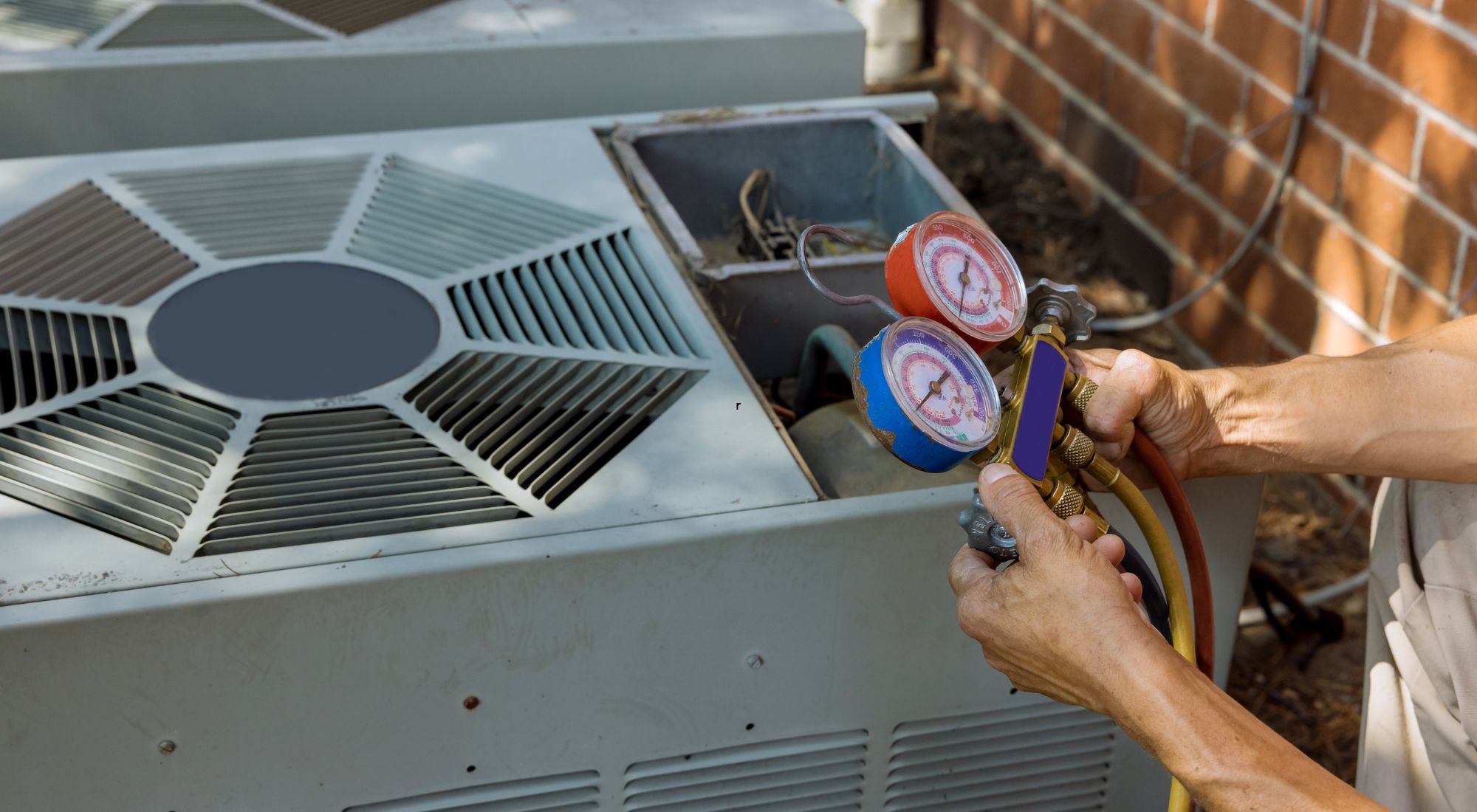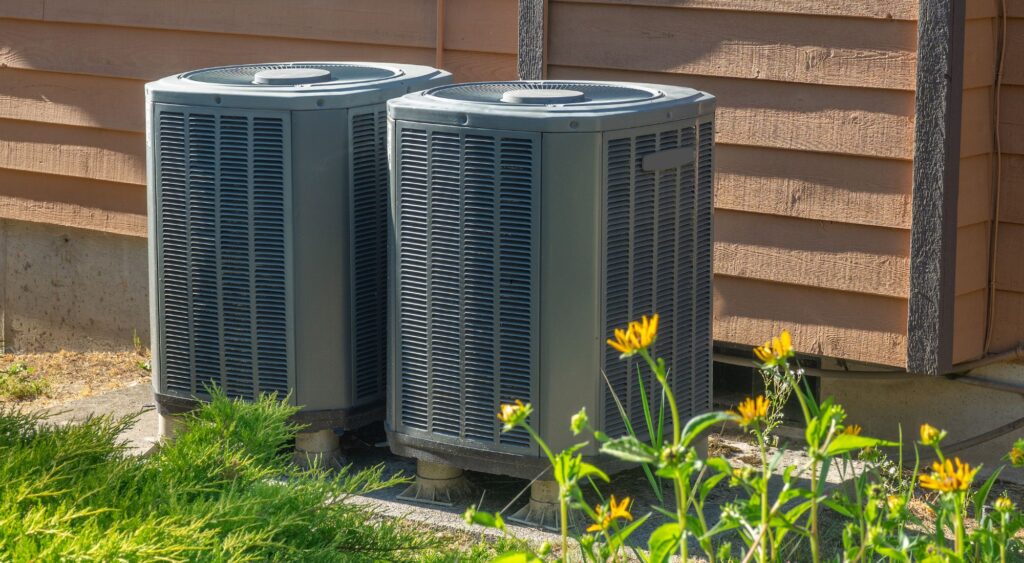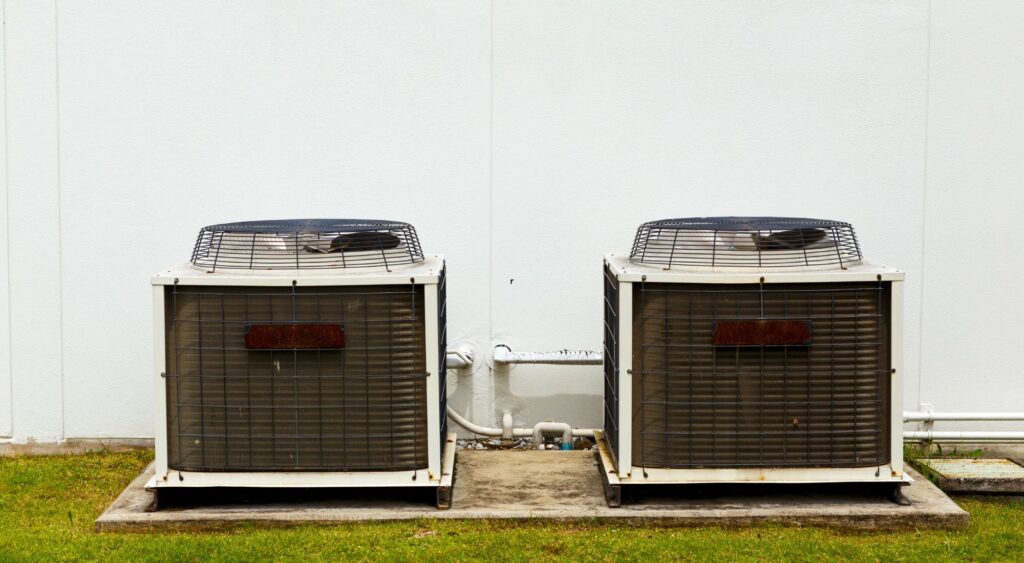
You’re in the market for a new AC and keep hearing the term SEER rating tossed around like common knowledge. You know SEER ratings have something to do with the energy efficiency of an appliance but are unsure of how that factors into your home, budget, and needs.
The salesperson keeps steering you towards air conditioners with high SEER ratings but the higher the SEER, the higher the ticket price.
So, are SEER ratings really that important? Do high SEER-rated air conditioners actually pay for the price difference over time? And how are SEER ratings exactly calculated?
In this article, you’ll find out what a SEER rating is, current SEER regulations, benefits and factors of a good SEER rating, and how to find the SEER rating of your HVAC appliances.
Table of Contents
- What Is a SEER Rating?
- New HVAC Regulations for 2023
- What Is a Good SEER Rating in 2023?
- 4 Benefits of Having a High SEER Rating
- How To Find the SEER Rating for Air Conditioners
- 3 Steps To Follow When Calculating SEER Ratings
- AAA Heating and Cooling: Providing Portland and the Surrounding Areas With HVAC Expert Services Since 1961
What Is a SEER Rating?
An AC’s Seasonal Energy Efficiency Ratio (SEER) rating relates to how much energy and money the unit will use during operation over a year.
According to the U.S. Department of Energy, SEER refers to the “relative amount of energy needed to provide a specific cooling output.” These energy ratings are important for homeowners because increasing your system’s efficiency can lead to savings in energy consumption and lower monthly costs.
New HVAC Regulations for 2023
On January 1st, 2023, two new SEER regulation changes became enforceable. The first change increased the minimum SEER rating for HVAC systems from 13 in the North and 14 in the South to 14 and 15 respectively.
The second change was the adoption of the SEER 2 standard. SEER 2, like SEER, is a rating that measures the amount of energy it takes to remove heat from a specific space. This additional rating was implemented to help SEER testing conditions better mimic real-life circumstances. The change has resulted in a slight decrease in SEER ratings, making them 4.7% lower than the original ratings.
For example, an HVAC system with an HVAC SEER rating of 17 before 2023 would be equivalent to a SEER2 rating of (17-(0.047*17)= 16.2).
As the industry phases out regulation-incompatible technologies, these changes may make it more difficult to replace parts or make repairs on older air conditioning units. Overall, these new rating standards will have a positive impact on the environment and you’ll likely see a nice reduction in your energy bills.
What Is a Good SEER Rating in 2023?
The US Department of Energy sets the minimum SEER rating by region. Currently, the minimum SEER for air conditioners is 14 or 15, but depending on whether you live in the North or the South. Most modern units have ratings between 13 and 24. SEER2 ratings range from a rating of 13.4 to 28. Nowadays, the average A/C unit has an energy efficiency rating of 16.
When looking at the SEER rating, you may be wondering if an AC unit with a high SEER ratio is worth it. Higher SEER units prove better cooling power and lead to more comfortable spaces. These units also offer more consistent cooling and don’t require your AC to frequently turn on and off to maintain temperatures.
If you want to replace a 20-year-old air conditioner with a new one that has the minimum SEER rating, there’s a good chance that your energy efficiency will improve instantly. In general, good SEER values for residential air conditioners are 14 to 16.
Looking for other ways to improve your energy efficiency? Check out our guide to energy-efficient heating and cooling.
How SEER Ratings Affect Your AC Unit
Before an AC installation, keep in mind that a SEER ratio indicates the unit’s maximum potential. This means that when a unit states that it has a value of 21 SEER, for example, the rating can be as high as 21 SEER. It will not always perform at 21 SEER because of other variables such as outdoor temperatures, thermostat settings, building envelope, and current ductwork.
SEER ratings are variable, which means that HVAC units with the highest SEER values may not save you money in the future or “pay for themselves.” If equipment rated at 21 SEER performs at an average of 15 SEER, it may be wiser to save money and purchase an AC with a lower SEER rating.
An HVAC specialist can help you determine the most appropriate SEER rating for your new AC unit using special equations that average the maximum Energy Efficiency Ratio (EER) over the range of expected seasonal temperatures. In general, good SEER values for residential air conditioners are 15 to 16.
At AAA Heating and Cooling, the health, comfort, and safety of our clients are our top priorities.
So if you’re looking to install a new AC but don’t know where to start, we can help guide you through the process. Our design specialists can sit down with you to create a custom comfort system that meets your standards and budget.
Other Factors To Consider When Choosing an AC Unit
While SEER ratings are an important factor when buying an air conditioner, it is also necessary to consider:
- Your budget
- The size of your home
- The size of the air conditioning unit and its air handling capacity
- EER ratings
- Ease of maintenance
- Lifetime costs, including energy, maintenance, and repairs
- A unit’s quality and life expectancy
- The manufacturer’s history of reliability
- Warranty terms
The implementation of SEER ratings has made air conditioners more energy-efficient and Earth-friendly, creating a win-win situation for all.
When planning a new AC installation, contact the specialists at AAA Heating and Cooling to learn more about the options available and receive expert help with determining the best SEER rating for your comfort and energy savings goals.
4 Benefits of Having a High SEER Rating
#1: Greater Indoor Comfort
For some homeowners living across the United States, heat isn’t the only thing the summer months offer. Humidity levels can make your home an uncomfortable space, instead of a reprieve from the sweltering heat.
The cycling frequency of an HVAC system may affect a unit’s ability to remove water from the air. If an AC unit has a disproportionate cycle that continues to turn off and on, it may not be capable of removing moisture from the air.
Units with a high SEER rating tend to have longer cycles, which continually removes moisture while cooling. Too much humidity in a space may negatively impact indoor air quality by promoting mold and mildew growth. This is why air conditioners with a high SEER rating may be particularly important for people who have allergies or respiratory issues.
#2: Lower Environmental Impact
A high SEER-rated HVAC appliance reduces the energy output it takes to heat and cool your home. By reducing the energy demand, a high SEER-rating air conditioner decreases greenhouse gas emissions. SEER standards also limit the impact of other pollutants associated with heating and cooling systems, such as refrigerants.
#3: Better Cost-Savings
According to the Environmental and Energy Study Institute (EESI), the incremental cost of efficiency is three to eight percent of the current equipment costs. For most consumers, this cost will be made up through lower utility bills within three to four years.
For example, if you live in Portland, OR, and have an air conditioning unit with a SEER rating of 13 and are looking to switch your unit for a model that has a 28 SEER2 rating, your current model will cost around $170 in electricity a year. The new unit will cost around $87 in electricity per year. This would result in a 95% in savings per year and:
- $415 in savings after 5 years
- $830 in savings after 10 years
- $1,246 in savings after 15 years.
These savings may potentially mitigate the costs of an AC unit with a high SEER rating over time.
#4: Tax Credits, Incentives, and Rebates
Homeowners who swap their current HVAC system for one with a higher SEER rating may be given a tax credit or rebate for the switch.
From now until December 31st, 2032, homeowners who own an Energy Star-certified air conditioning unit are eligible for a $600 if the split system has a SEER rating of 16.
The Inflation Reduction Act of 2022, allows homeowners to receive a tax credit for eligible home improvements to cover 30% of the update costs with a $1,200 limit.
How To Find the SEER Rating for Air Conditioners
Take a look at your cooling system and locate the yellow and black EnergyGuide label, which is usually affixed to the side of the condenser. If you can’t find the label on the side, check inside the appliance.
Some manufacturers include the SEER rating in the front part of the model number on the data plate. Look out for “XC14” followed by the dashes and numbers that make up the rest of the model number—this would mean the SEER rating is 14.
Alternatively, you can check the seller’s or manufacturer’s websites.
3 Steps To Follow When Calculating SEER Ratings
If you’ve tried all the steps above and still can’t find your unit’s SEER rating, you can easily calculate it yourself.
SEER ratings are ratios derived by calculating the annual cooling output during the cooling season divided by the total electric energy input. The total cooling output is the AC’s British thermal unit per hour (BTU/h) multiplied by the number of cooling hours per day and the number of cooling days per year.
For example:
6,000 BTU/h x 10 cooling hours per day x 200 days per year = 12,000,000 BTUs per year
Step #1: Estimated Annual Energy Use
Using the example above, if an air conditioner has a SEER rating of 15 BTU per watt-hour (Wh), you could calculate the estimated annual energy use as follows:
12,000,000 BTUs per year ÷ 15 BTU/Wh = 800,000 Wh per year
Step #2: Annual Average Power Use
To calculate the annual average power use, divide the A/C’s BTU/h by the SEER rating. For example:
6,000 BTU/h ÷ 15 SEER = 400 watts (or 0.4 kilowatts)
Step #3: The Cost of Electricity When Using the AC
To calculate the cost of electricity when using the AC, multiply the average kilowatts from the formula above by your local electricity rate in kilowatts per hour (kWh). For instance:
0.4 kW x $0.25 kWh = $0.10 per hour
The EnergyGuide label on the HVAC unit will also indicate the amount of energy the equipment consumes.
AAA Heating and Cooling: Providing Portland and the Surrounding Areas With HVAC Expert Services Since 1961
When it comes to what SEER rating is best for your home and HVAC system, it’s always a safe bet to trust in the professionals — and AAA Heating and Cooling are the heating and cooling experts you can trust.
For over 60 years AAA Heating and Cooling has provided Portland and the surrounding areas with expert care, services, and designs.
From our A+ Better Business Bureau rating to our Gold Bond Lifetime warranty, we have proudly remained Portland’s leading heating and cooling professionals. We are a family business that continually improves our knowledge and services through continued education for all of our technicians.
AAA Heating and Cooling truly believes in customer satisfaction and fair pricing. Some heating and cooling companies prey on their clients with additional surprise fees. Not us. Our transparent pricing system relies on our all-inclusive installation bids that include pricing on everything involved in the job so you know exactly what you are paying for.
Join our thousands of satisfied customers by requesting our help with residential and commercial HVAC installation, repair, inspection, and maintenance for:
- Furnaces
- Air conditioners
- Heat pumps
- Control Systems
- Ducts
- Water heaters
Schedule an appointment or consultation today.


